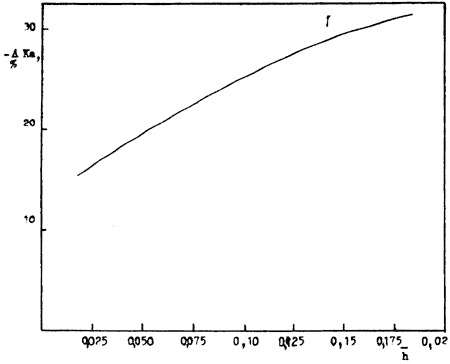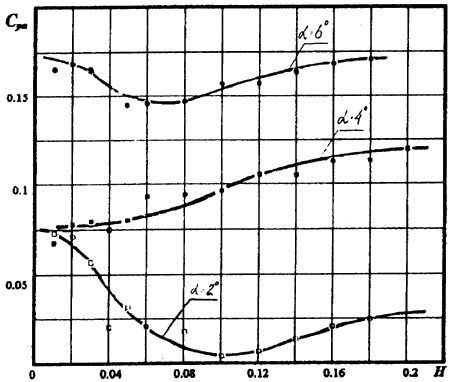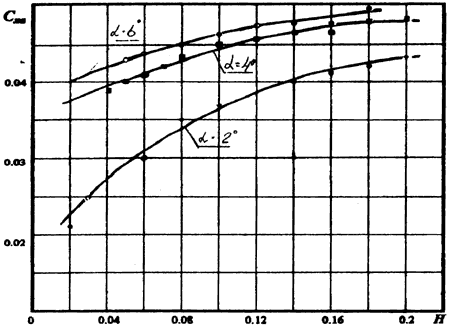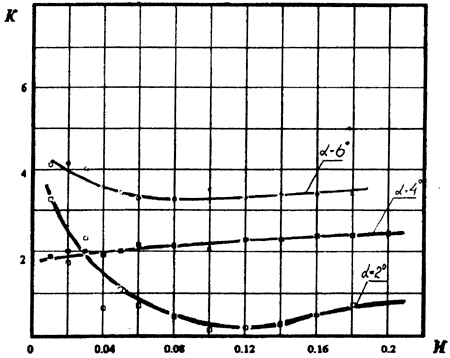
Fig. 6 Value of lift-to-drag ratio decreasing of speed-up-receiving ekranoplane in docked with ASP position against a relative altitude of flight over sea surface.
Despite of the indicated decreasing of lift-to-drag ratio of the docked complex, in view of 2-2,5 times reserving of ekranoplane thrust in a flight mode it is necessary to consider that ekranoplane power plant always provides operation of this complex.
The outcomes of experimental researches indicate rather complex nature of ASP and ekranoplane interplay during their separation and docking. This is connected with the slot-hole passage between ASP undersurface and upper face of ekranoplane central wing, and with aerodynamic interference of their separate structural elements. Thus aerodynamics of ASP flight near ekranoplane has a number of features conditioned by equalling of horizontal components of speeds of both flying vehicles. So, at small distances to the surface the lift of ASP is great enough for due to WIG-effect, however at increase of distance "fall" in lift takes place, as in an initial stage of separation decrease of a lift coefficient is not indemnified by increase of ASP speed (Fig.7). Such change of lift is not identical for different attack angles and ASP removals and at some angles of attack in view of design features of vehicles (in particular - arrangement of engines of ekranoplane) the lift coefficient can be obtained permanently increasing.

Fig. 7 Relation of ASP lift coefficient against relative distance to ekranoplane.

Fig. 8 Relation of a factor of ASP resistance force against relative distance to ekranoplane.

Fig. 9 Relation of ASP lift-to-drag ratio against relative distance to ekranoplane.
The factor of ASP resistance force essentially depends on a positional relationship of a propulsive plant of ekranoplane and ASP. At small removals the drag coefficient is reduced at the expense of both WIG-effect and deceleration of flow in a vortex wake of ekranoplane engines.
Obviously, that from the conducted researches at detail improvement of the problems of aerodynamic coupling of ekranoplane and ASP it can be ensured both value of lift force and lift-to-drag ratio of an aerospace airplane required for implementation of its separation from ekranoplane and take-off. The similar conclusions can be made concerning process of ASP landing on ekranoplane.
4. PROBLEMS OF CONTROL OF COMPLEX OPERATION
Outcomes of the fulfilled researches of control processes at take-off and landing of flying vehicles on moving ekranoplane obtained at piloting stand and with use of measurement tools, and also according to the pilot - tester, confirm the capability of control of ekranoplane and the second flying vehicle in joint motion at all stages of this process. The altitude control of ASP above ekranoplane is the most complex one requiring the knowledge of precise values of this altitude [5,9].
The landing of ASP may include six stages, each of which should be supplied with the appropriate opportunities and characteristics of navigation and motion control systems of both craft.
BACK CONTENTS NEXT